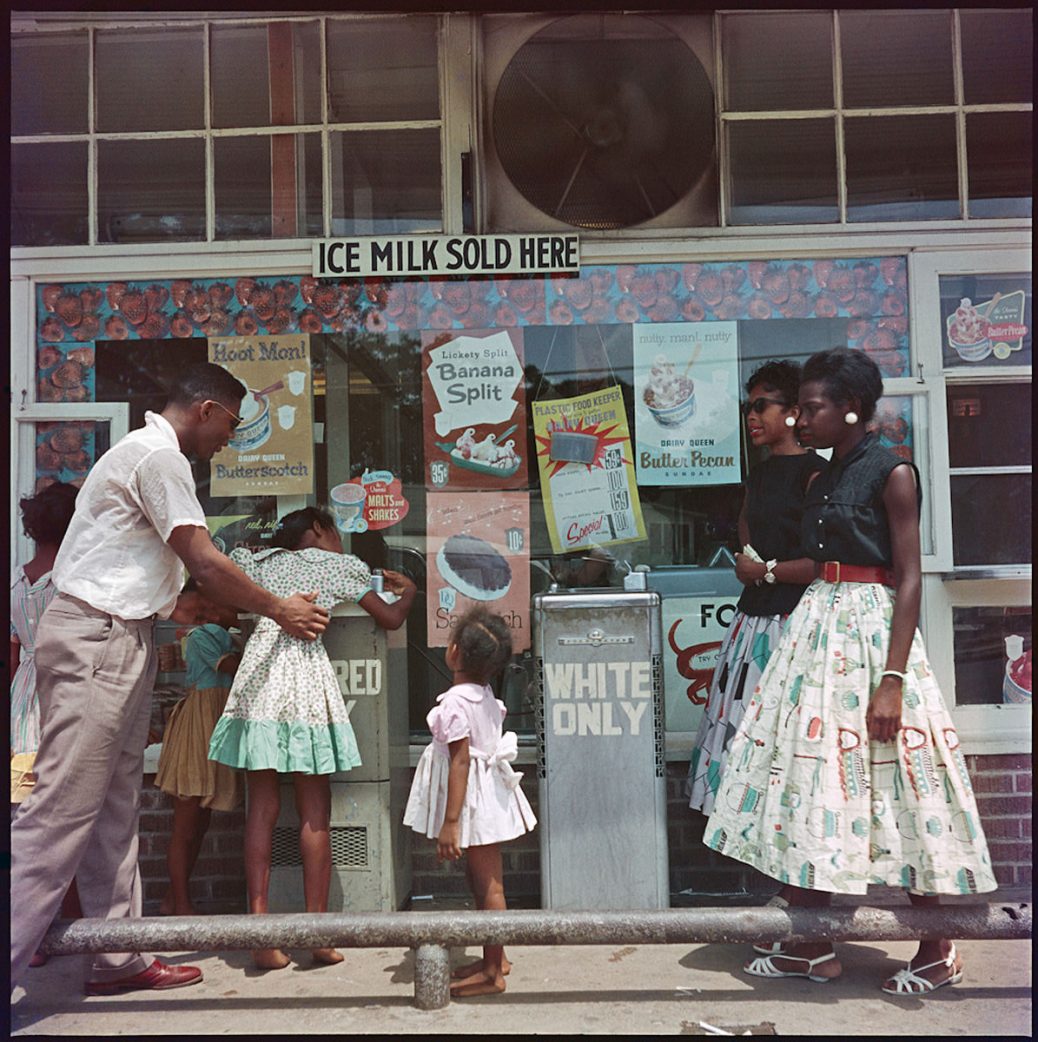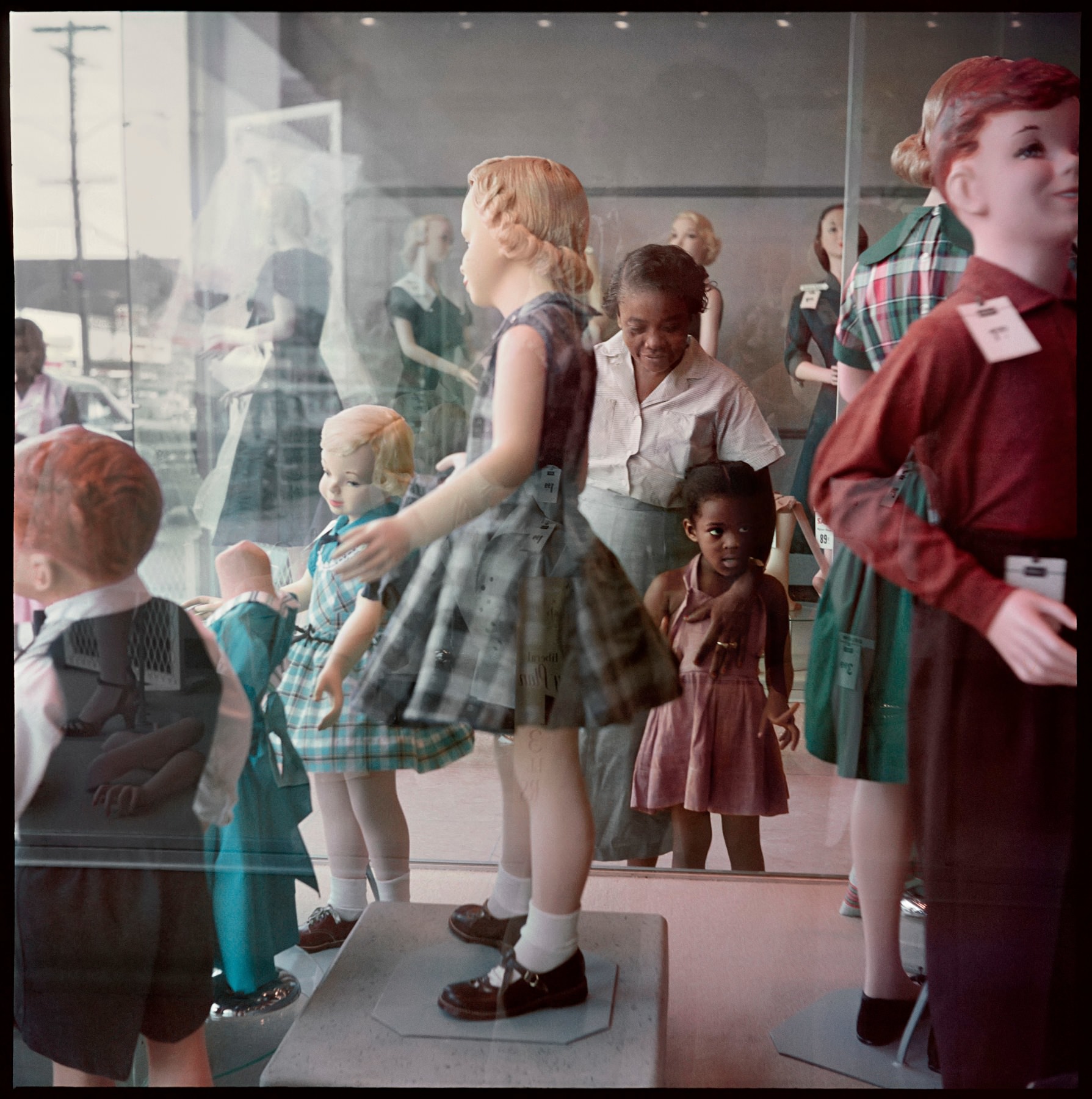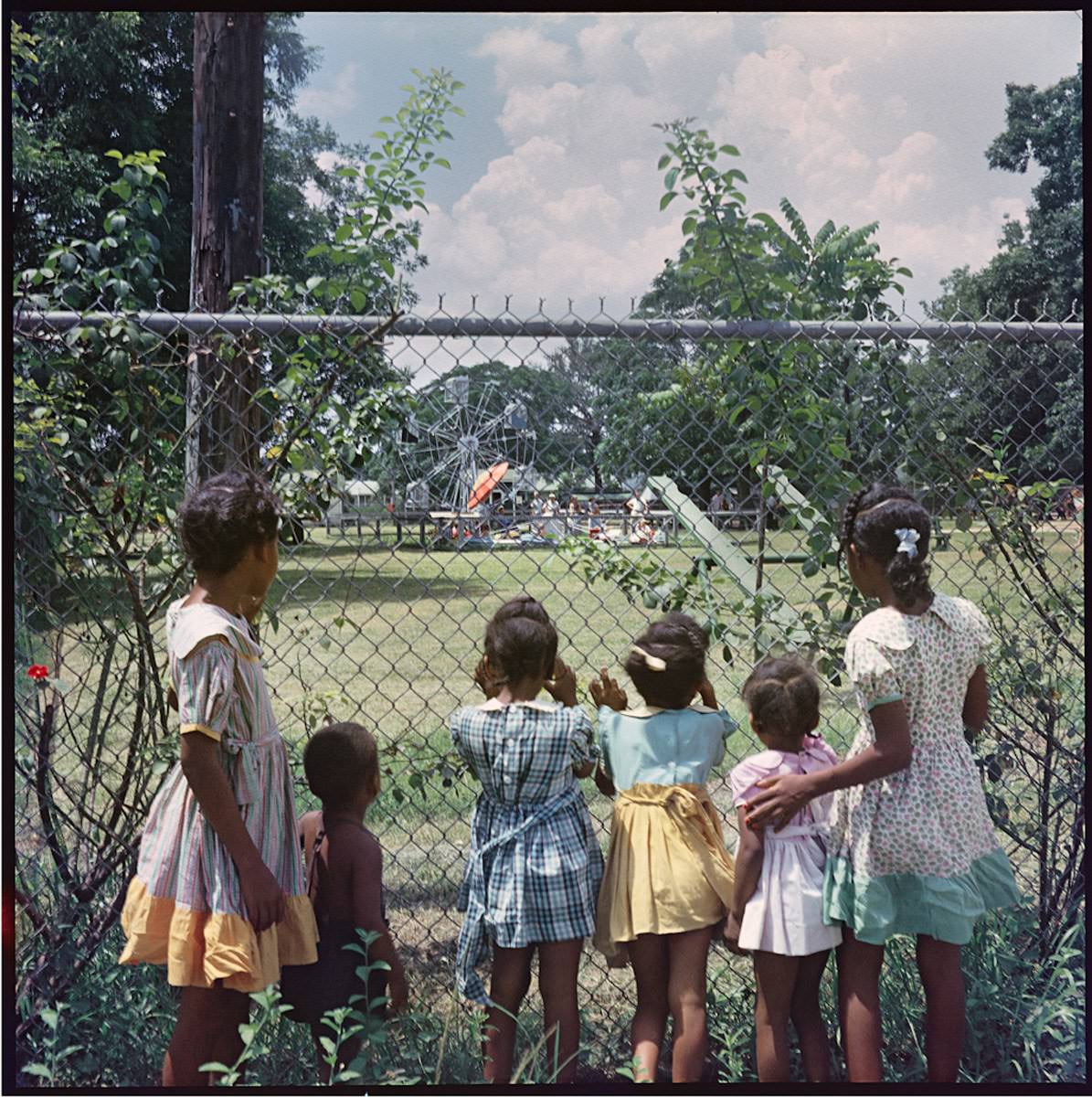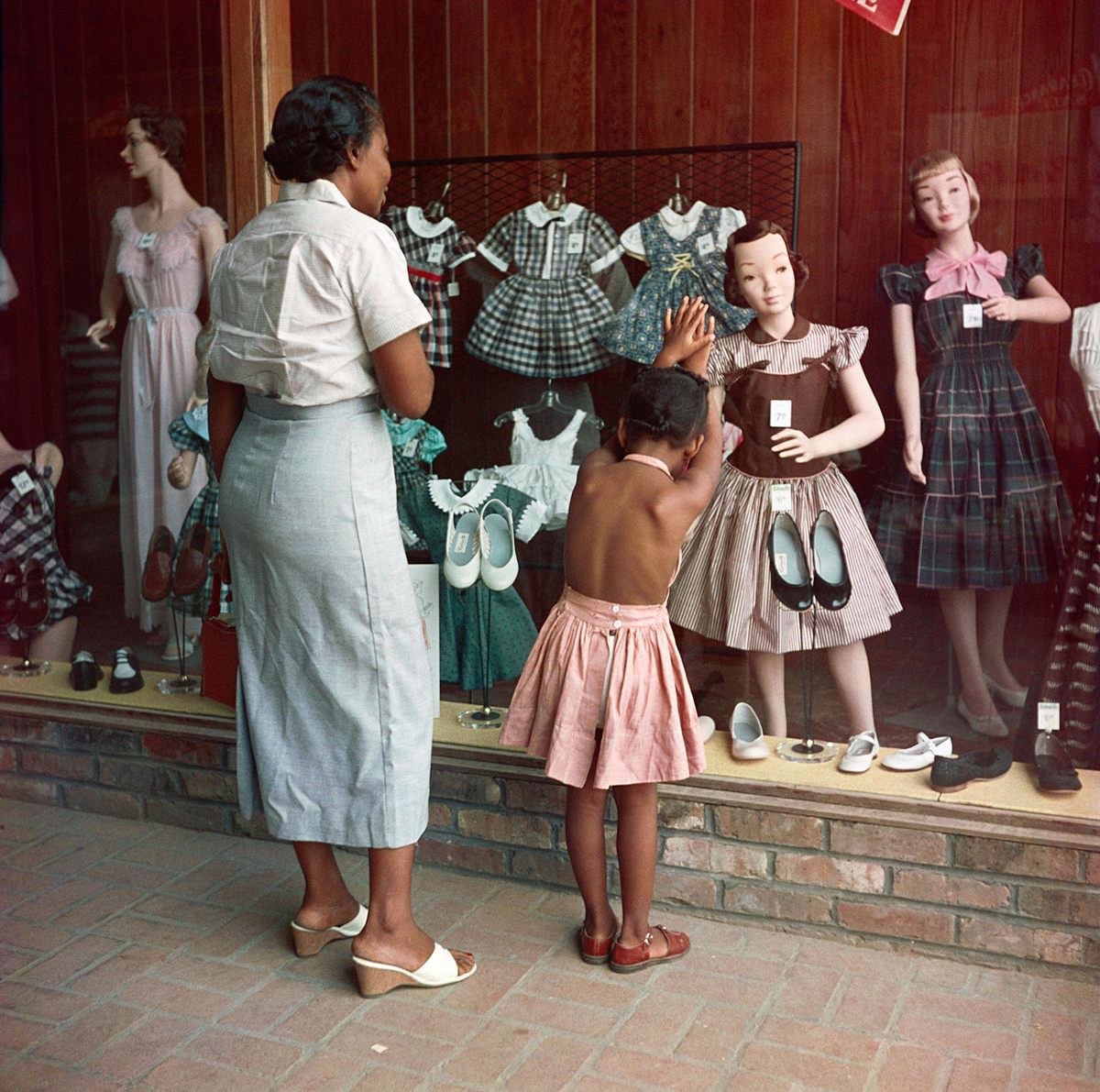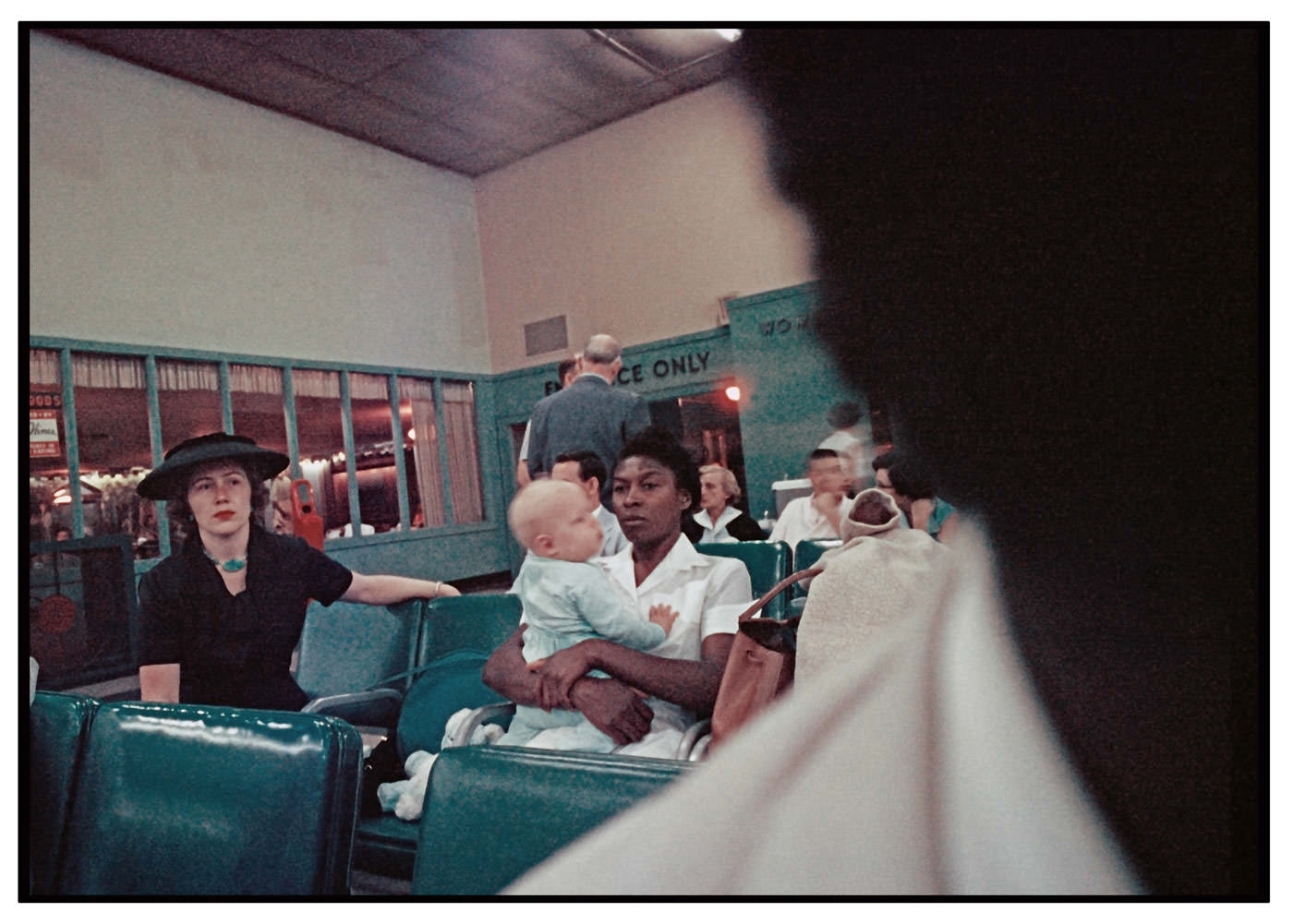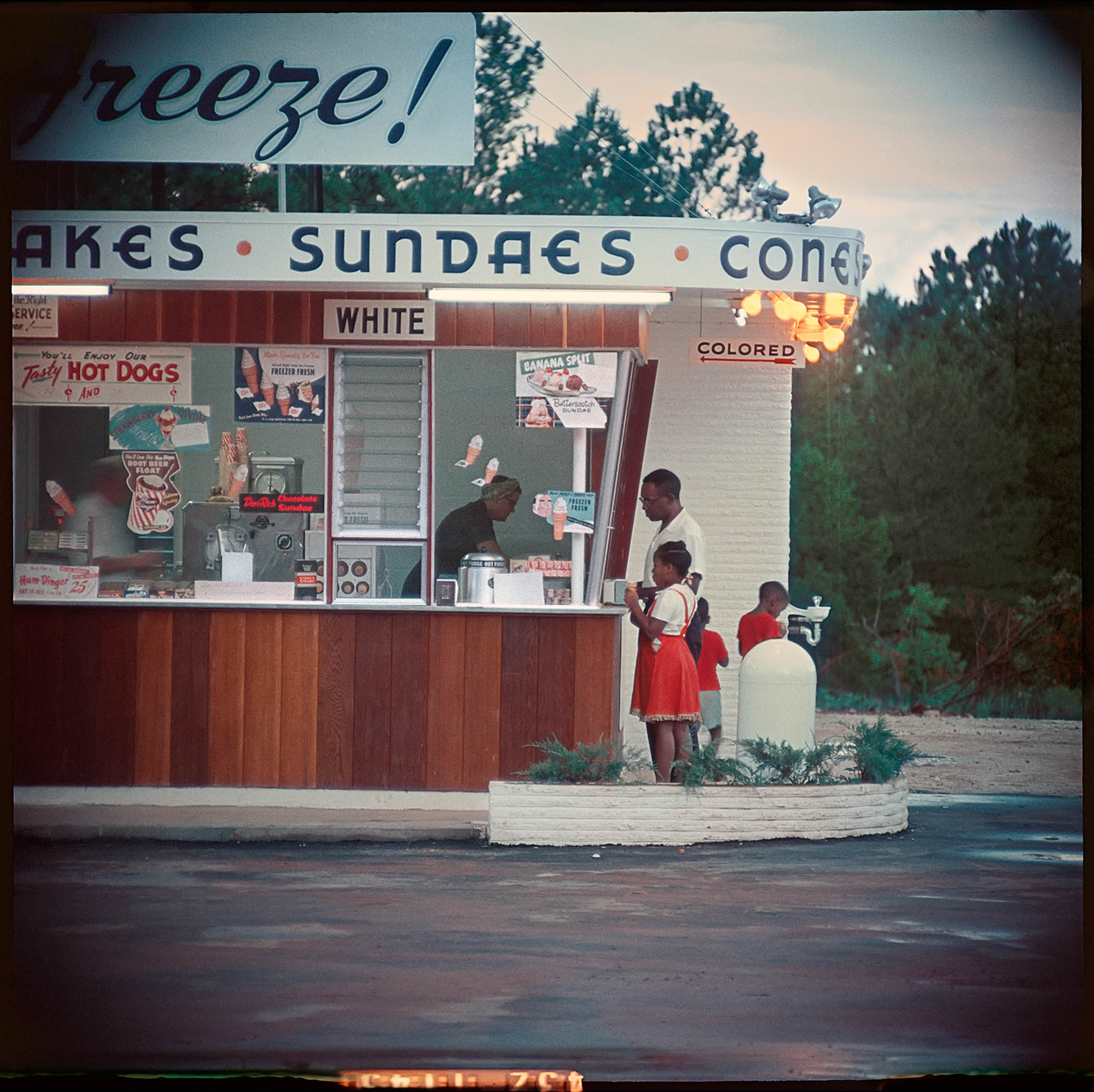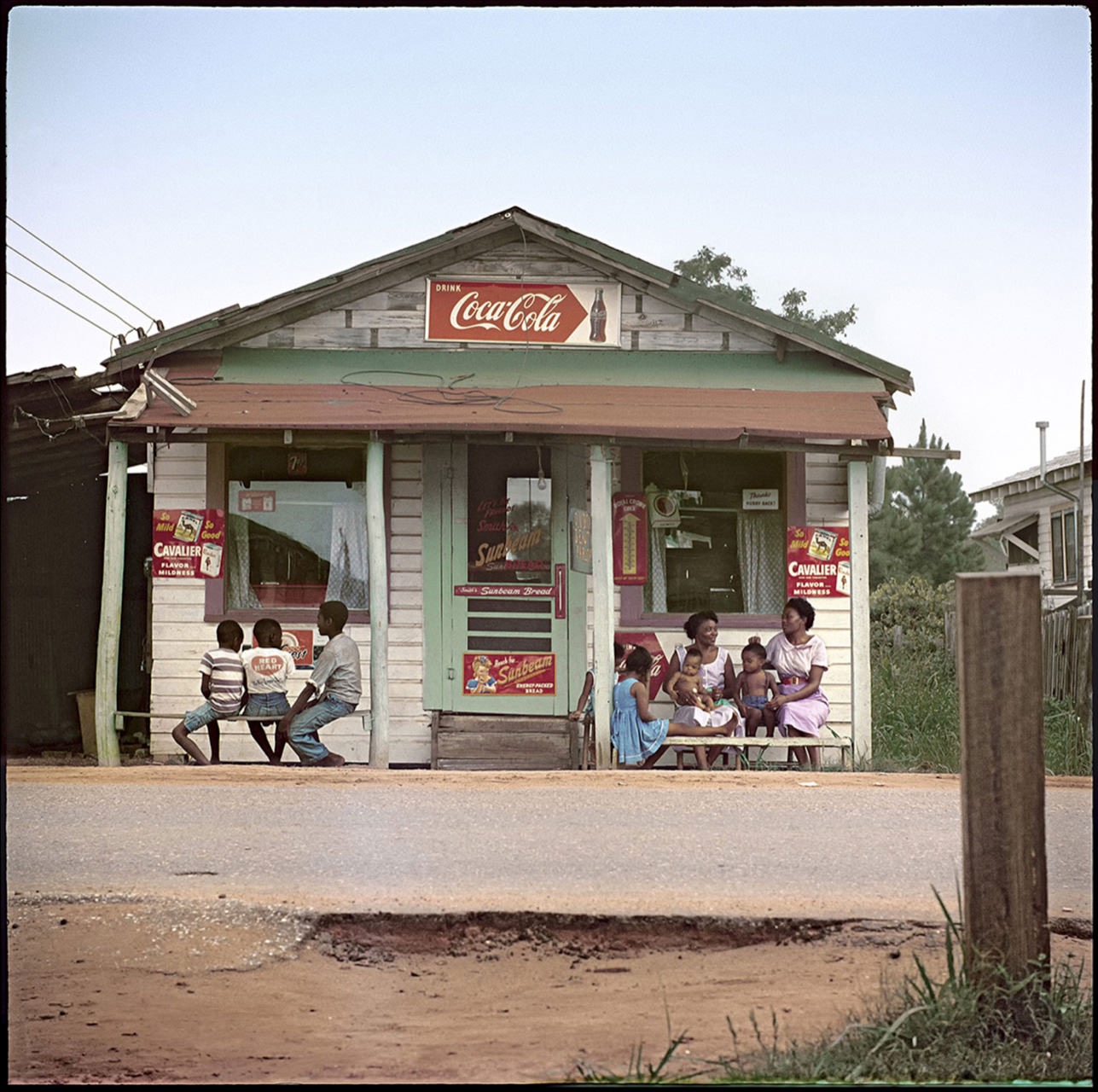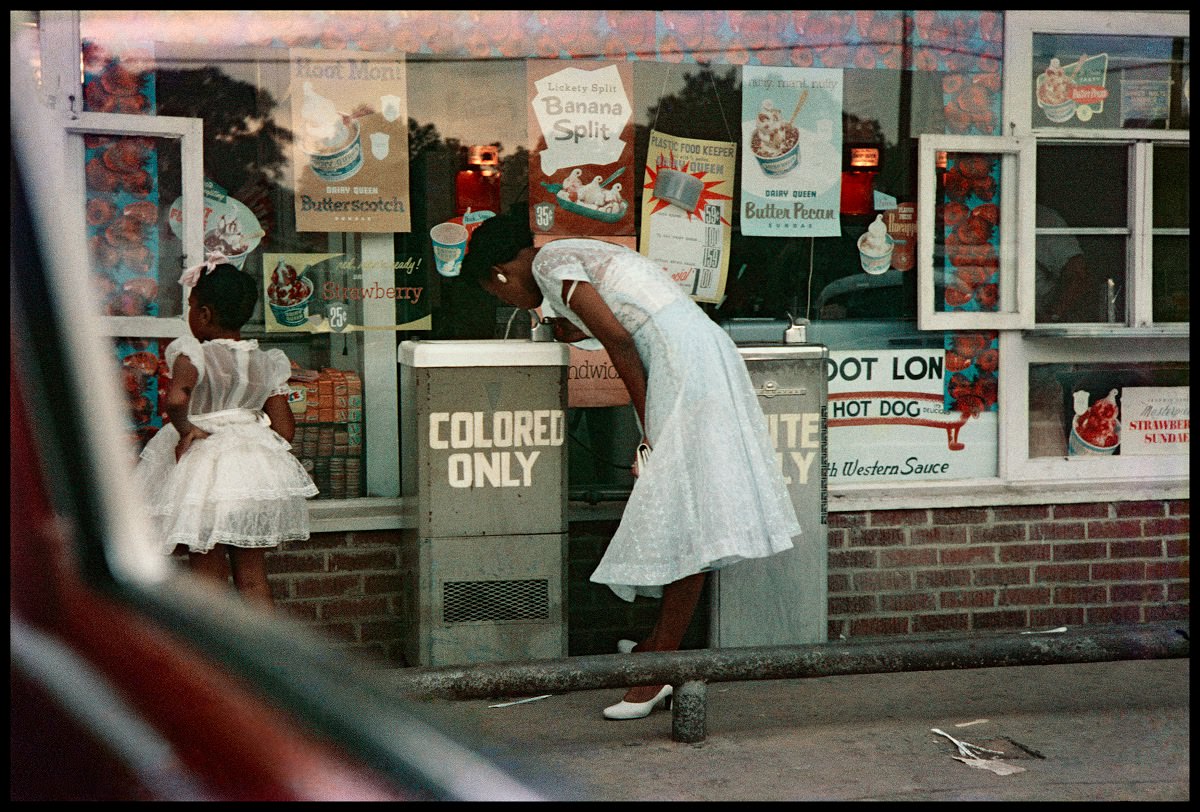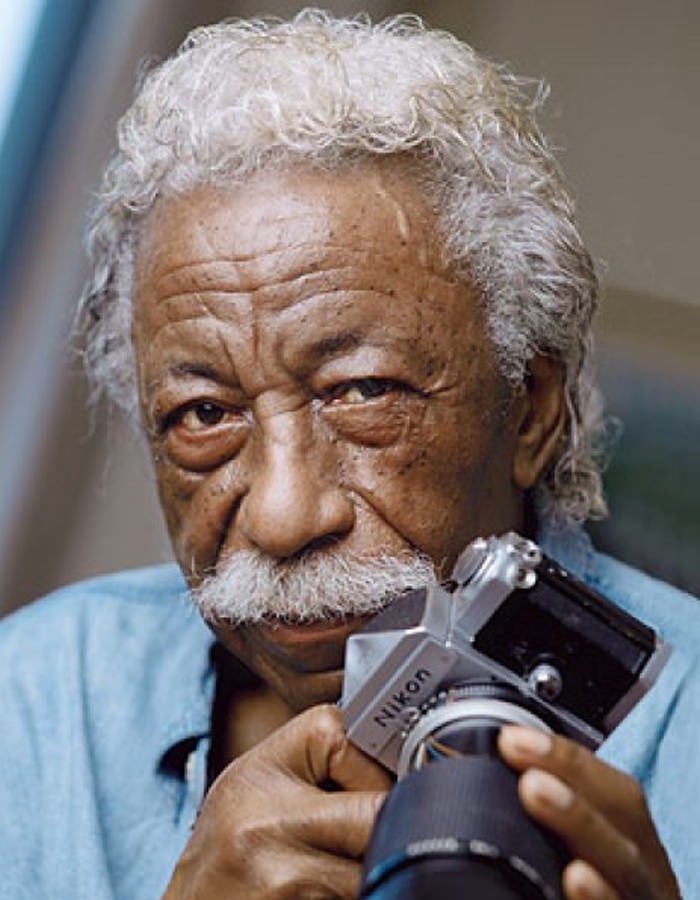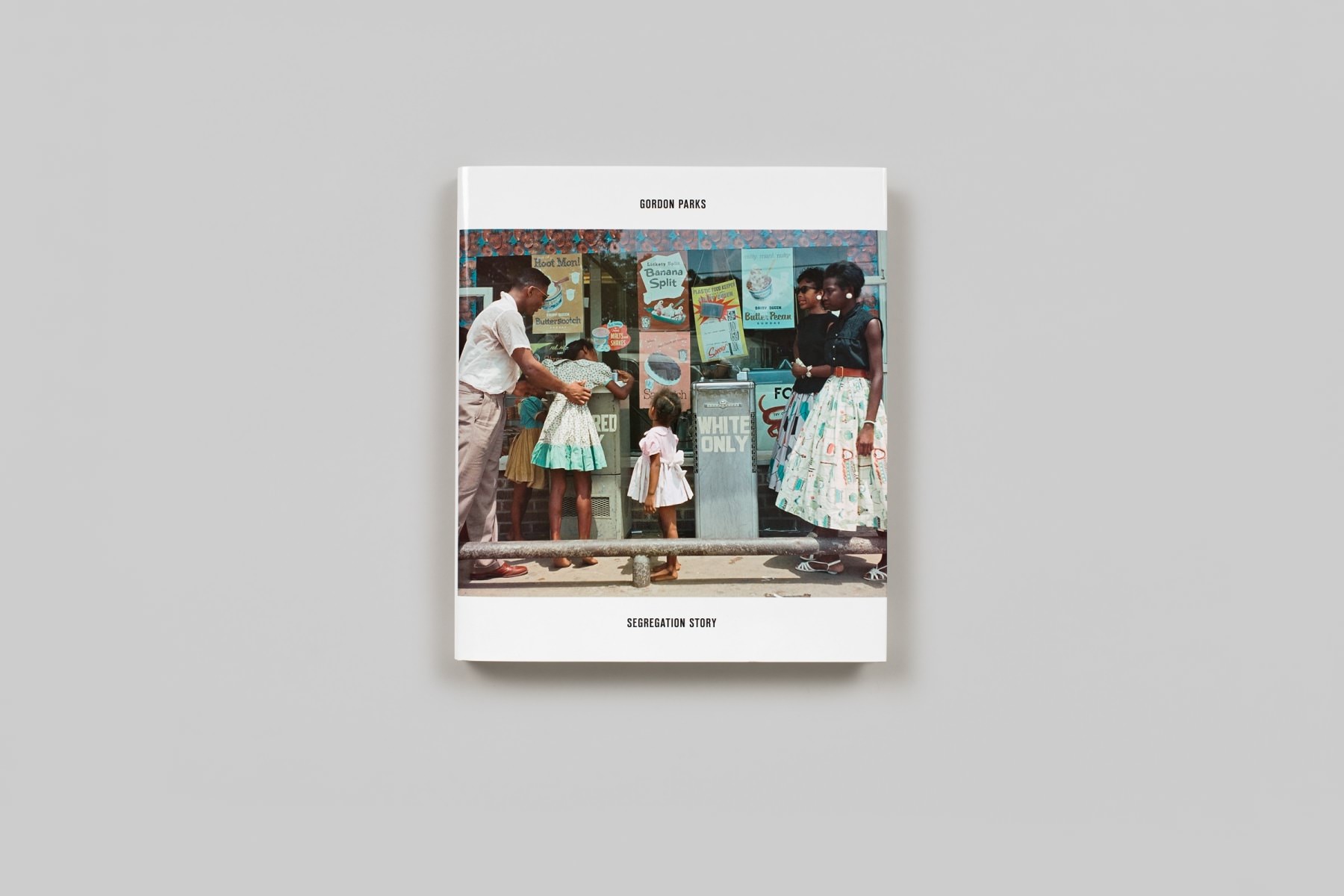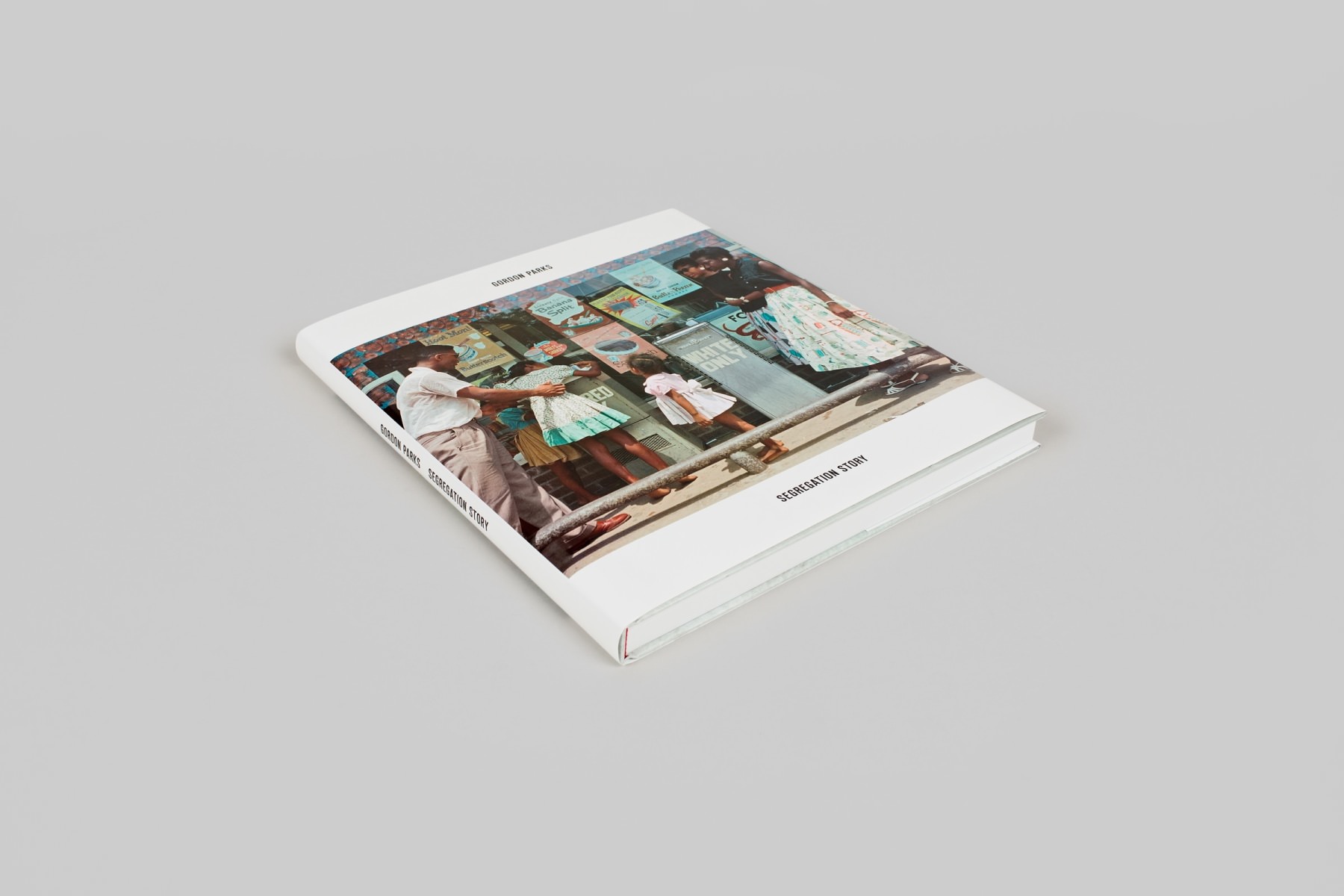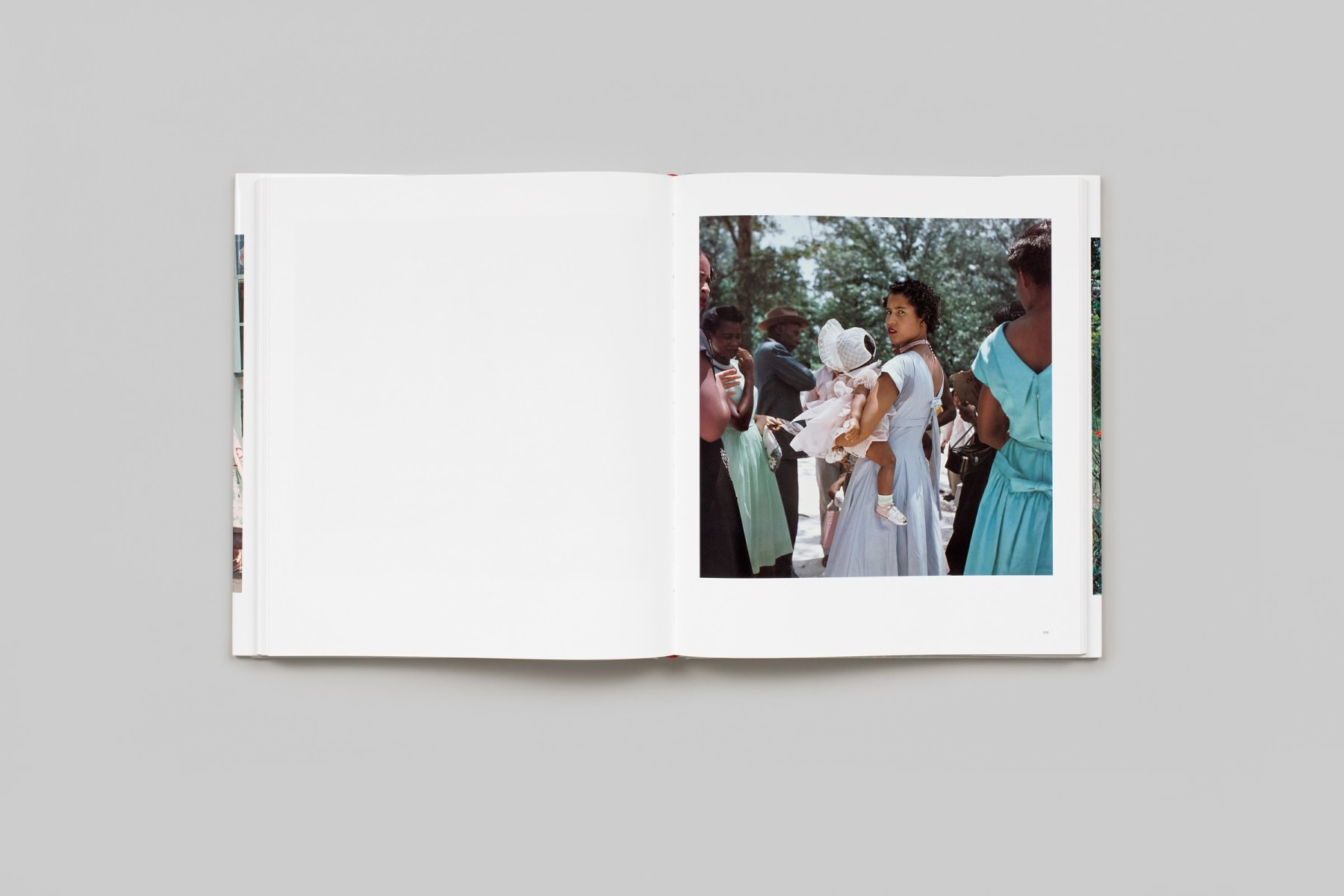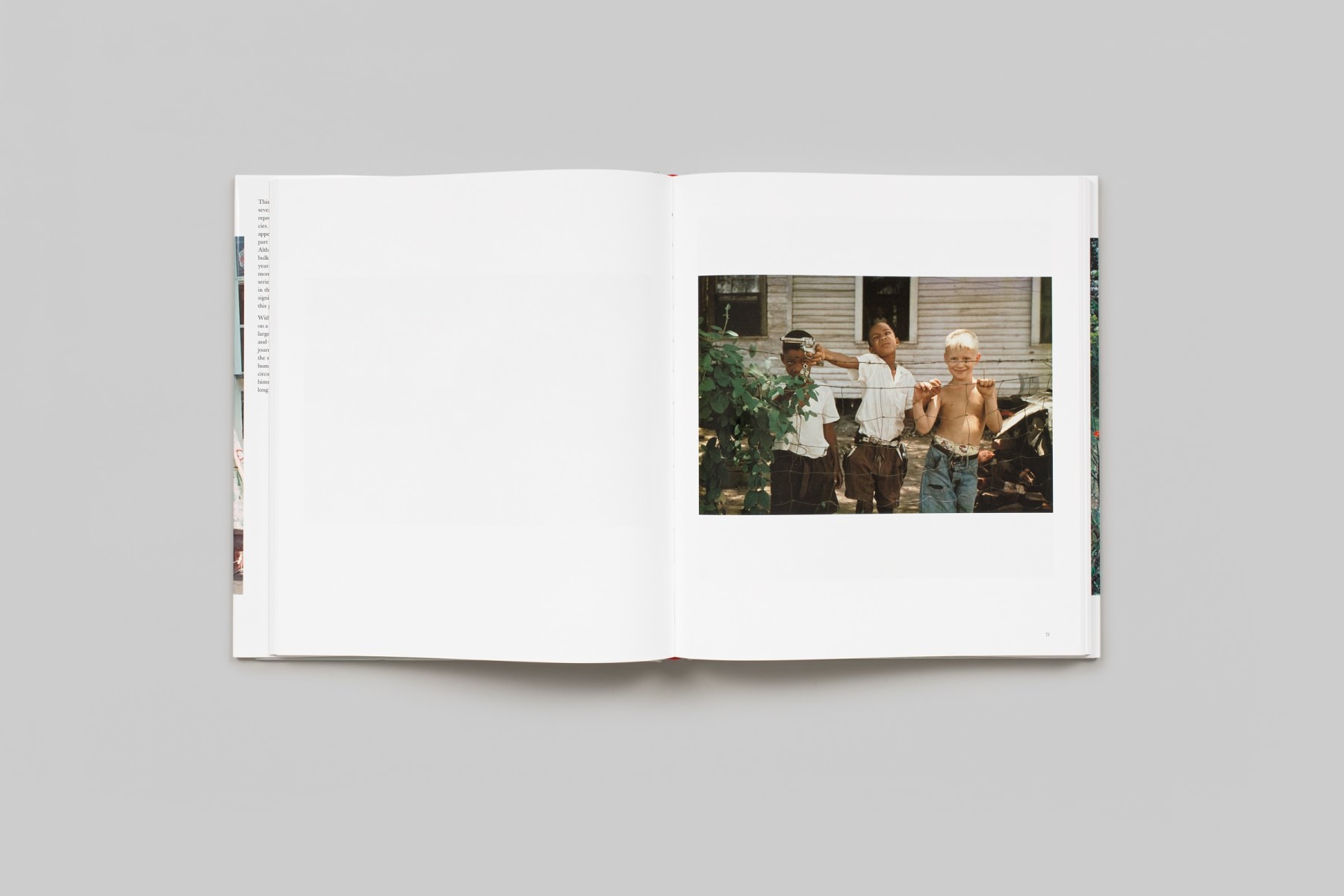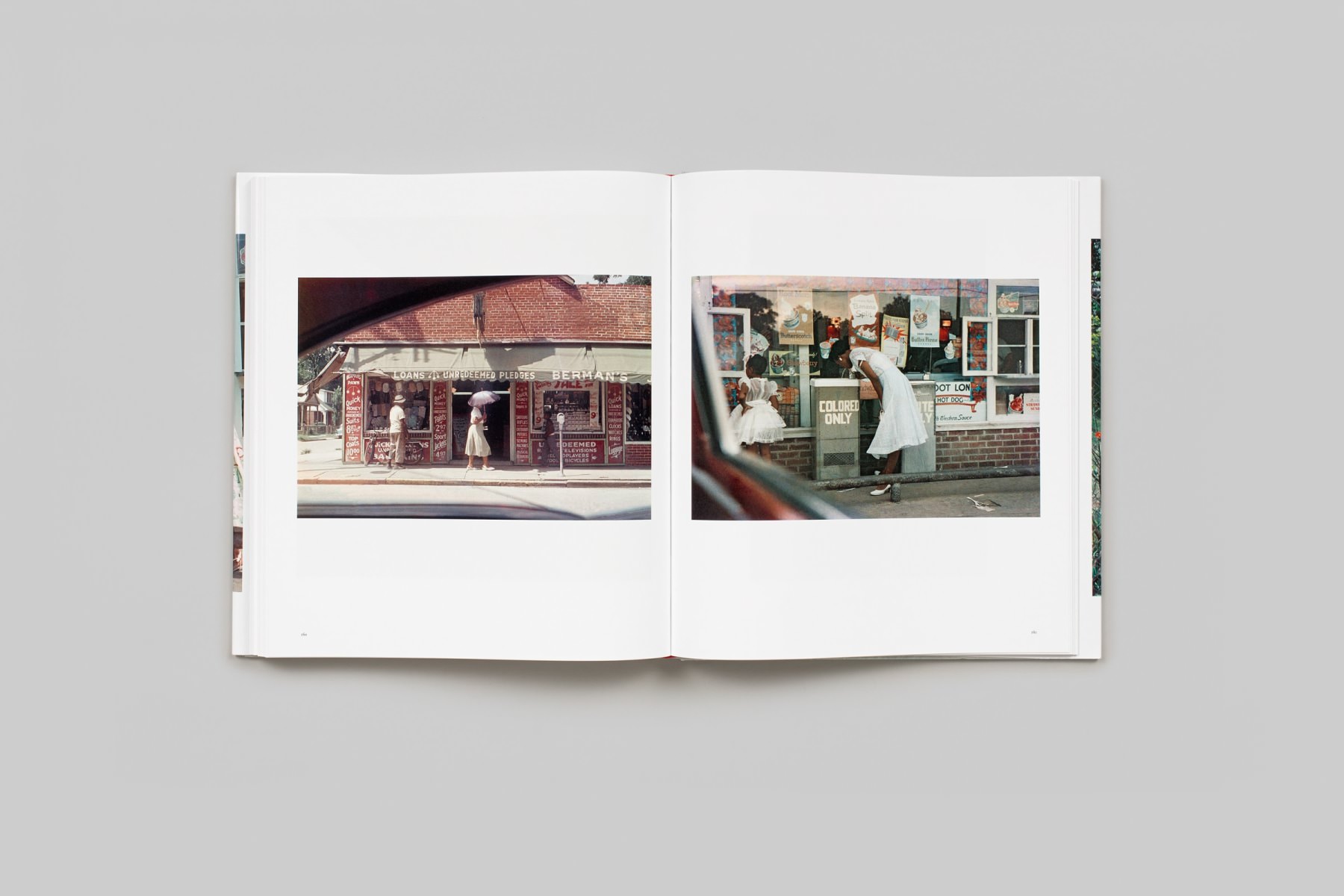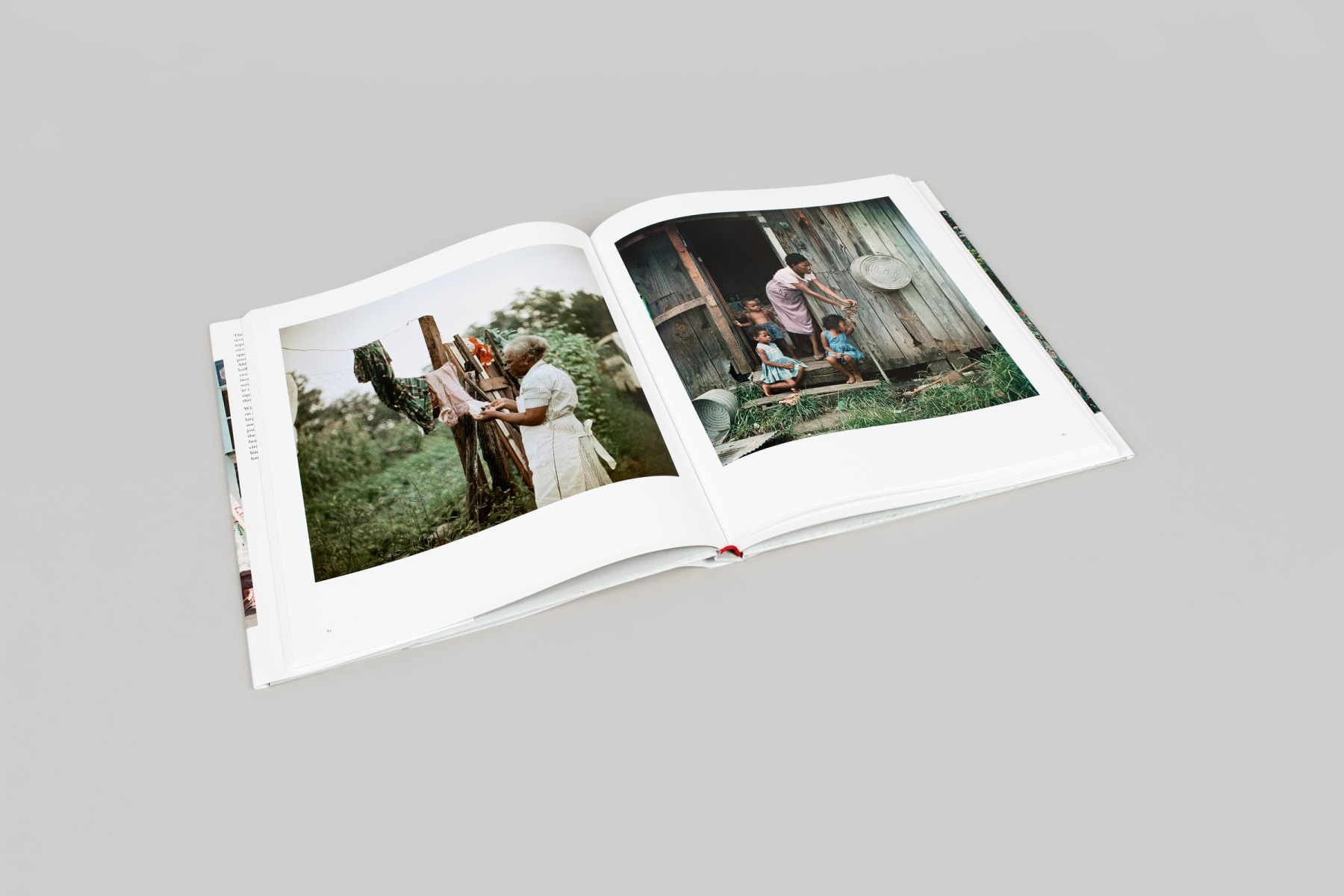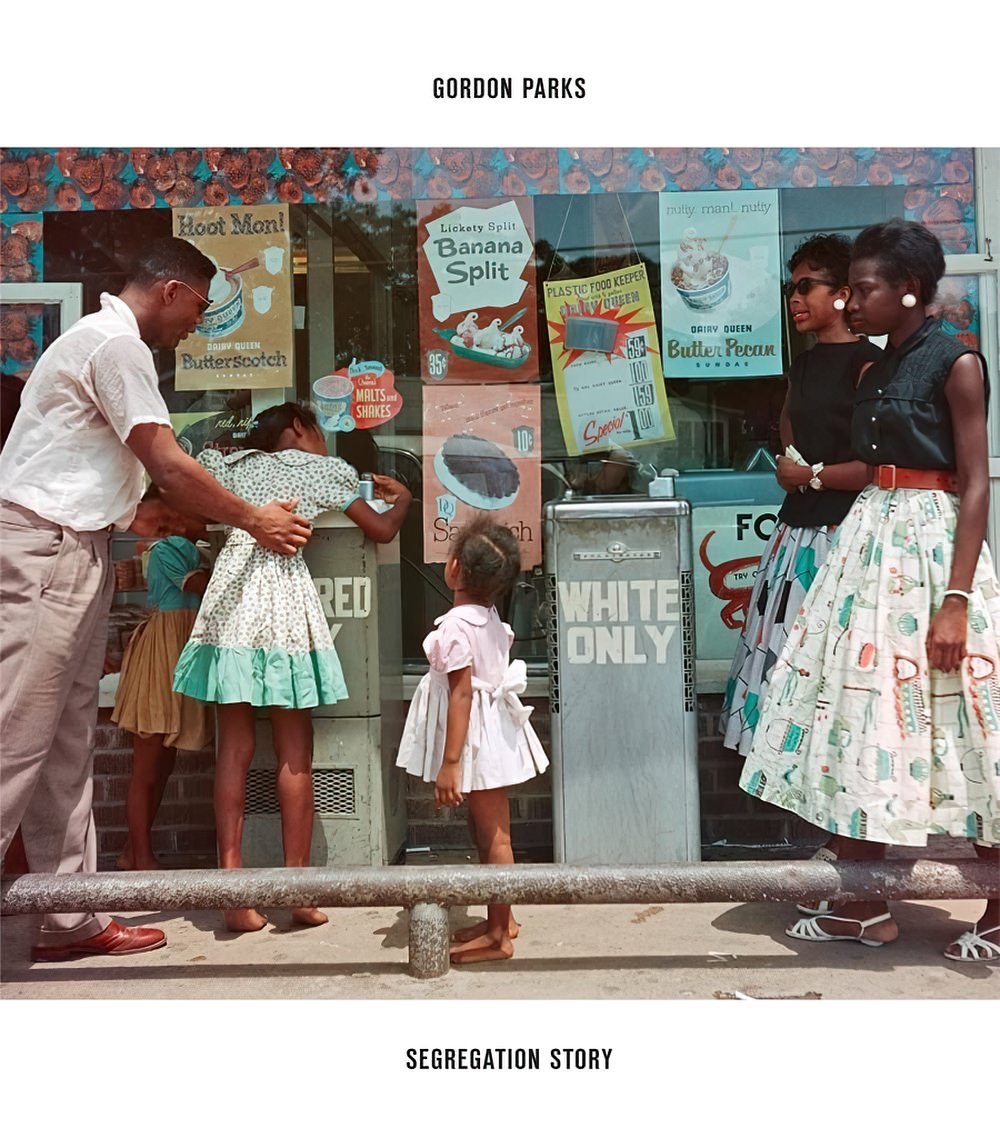Gordon Parks: Segregation Story
This new edition of Gordon Parks’ Segregation Story includes several never-before-published photographs, as well as enhanced reproductions created from Parks’ original transparencies. A selection of 26 images from Segregation Story first appeared in the September 24, 1956 issue of Life magazine as part of the photo-essay “The Restraints: Open and Hidden.” Although some of these were exhibited during his lifetime, the bulk of Parks’ assignment was thought lost. In 2011, five years after Parks’ death, The Gordon Parks Foundation discovered more than 70 color transparencies from the series. Revising the original book published by Steidl in 2014, this expanded edition is the most comprehensive publication of this pivotal body of work to date.
In the summer following the 1955 bus boycott in Montgomery, Life magazine sent Gordon Parks to Alabama to document the daily realities of African Americans living under Jim Crow laws that enforced racial segregation. Over the course of several weeks in summer 1956, he photographed an extended African-American family, the Causeys, at home and work in the rural South. The resulting color photographs are among Parks’ most powerful and groundbreaking images, and have since become iconic representations of the conditions that led to the civil rights movement. Among them is one of Joanne Thornton Wilson and her niece, Shirley Anne Kirksey, standing in front of a theater in Mobile, Alabama — a celebrated image that became, in Parks’ words, a forceful “weapon of choice” in the struggle against racism and segregation. With its vivid color pictures, the series offers a fresh perspective on a most controversial period in American history, which looms large in the collective memory almost exclusively through black-and-white imagery. Parks’s empathetic approach eschewed the journalism that focused on the leaders and momentous events of the struggle for civil rights, and instead portrayed the common humanity of his fellow Americans going about daily life in unjust circumstances. Pursued at grave danger to the photographer himself, the project was an important chapter in Parks’s career-long endeavor to use the camera as a weapon for social change.
In addition to unseen images from the series, the expanded Segregation Story includes a new essay by artist Dawoud Bey, alongside texts from the first edition by the late art historian Maurice Berger and the esteemed journalist and civil rights activist Charlayne Hunter-Gault.
Co-published with The Gordon Parks Foundation.
About the Author
Gordon Parks (1912–2006) was a photographer, filmmaker, musician and author whose 50-year career focused on American culture, social justice, race relations, the civil rights movement and the Black American experience.
Born into poverty and segregation in Fort Scott, Kansas, Parks was awarded the Julius Rosenwald Fellowship in 1942, which led to a position with the Farm Security Administration. By the mid-1940s he was working as a freelance photographer for publications such as Vogue, Glamour and Ebony. Parks was hired in 1948 as a staff photographer for Life magazine, where for more than two decades he created groundbreaking work. In 1969 he became the first Black American to write and direct a major feature film, The Learning Tree, based on his semi-autobiographical novel, and his next directorial endeavor, Shaft (1971), helped define a film genre. Parks continued photographing, publishing and composing until his death in 2006.

